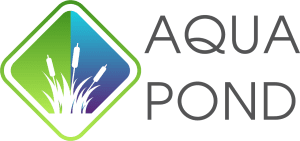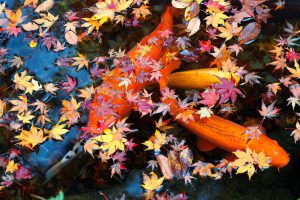
Effective Ways on How to Remove Algae from Your Pond
Struggling with algae in your pond? Learn how to remove algae from your pond with practical solutions that work. This guide covers manual methods, chemical treatments, and natural remedies for a healthier, clearer pond.
Key Takeaways
Manual and mechanical algae removal methods, such as skimming and using pond vacuums, are effective and environmentally friendly first steps in algae control.
Integrating chemical solutions like non-toxic algaecides and introducing beneficial bacteria can enhance algae management while ensuring ecosystem health.
Regular maintenance, including managing nutrient levels and improving water circulation, is crucial for preventing algae growth and promoting a balanced pond environment.
Manual and Mechanical Methods

When it comes to natural solutions for removing algae, nothing beats a bit of elbow grease. Regularly skimming the pond surface with nets is a straightforward yet effective way to reduce floating algae. Similarly, using pond rakes and blanketweed brushes can help manually remove algae, giving you immediate results. These natural methods are not only cost-effective but also environmentally friendly, making them an excellent first step in your algae control efforts.
For a deeper clean, consider using a pond vacuum. This tool is particularly efficient at removing accumulated debris and algae from the bottom of the pond, where it’s often harder to reach. Regular maintenance, including these manual methods, is key to preventing algae growth and ensuring a healthy pond environment.
Incorporating these techniques into your routine helps keep algae at bay, allowing you to enjoy a cleaner, clearer pond.
Safe Chemical Solutions
Sometimes, manual methods alone aren’t enough to keep algae under control. This is where safe chemical solutions come into play. Non-toxic chemical treatments can help manage algae growth while ensuring the safety of fish and other aquatic life. One effective option is peroxyhydrate granular algaecide, which eliminates algae and is safe for fish when used correctly. Dyeing the pond water a darker color can also limit light exposure, thereby controlling algae growth.
Hydrogen peroxide is another chemical solution that can be used safely to manage algae. When applied, it breaks down into water and oxygen, making it a safe option for pond ecosystems. Adequate aeration is crucial during this process to prevent oxygen depletion as the algae die off. These chemical treatments, when used responsibly, can significantly improve water quality and support the growth of healthy plants.
Balancing chemical treatments with natural solutions is crucial for maintaining a healthy pond ecosystem. Over-reliance on chemicals can disrupt this balance, so they should be part of a broader algae control strategy. Combining these methods allows for effective algae management without compromising the well-being of your aquatic life.
Beneficial Bacteria and Enzymes
Introducing beneficial bacteria into your pond is a natural solution that can significantly enhance pond health. Products like Nualgi utilize diatoms to aid in the digestion of organic waste, promoting a cleaner ecosystem. Users have reported faster clearing of algae when using Nualgi alongside existing beneficial bacteria treatments, making it a powerful addition to your pond maintenance routine.
Enzymes play a significant role in algae control. Some blanketweed treatments include enzymes that break down organic matter, reducing the nutrients available for algae growth. Combining the use of UV clarifiers with beneficial bacteria treatments can optimize algae management. However, it’s important to note that UV clarifiers can harm beneficial bacteria, so they should be used carefully to maintain a healthy balance.
Aeration is another vital component of using beneficial bacteria effectively. Enhancing aeration boosts oxygen levels, which helps inhibit algae growth and supports beneficial microbial activity. Surface aerators can significantly improve water quality and promote the overall health of your pond’s ecosystem. Integrating beneficial bacteria and enzymes into your algae control strategy creates a robust and sustainable solution for maintaining a clean pond.
Using Aquatic Plants

Aquatic plants are a natural and effective way to control algae in your pond. By shading the water surface, these plants can limit light penetration and suppress algae growth. Water lilies, for instance, can cover a significant portion of the pond surface, helping to regulate temperature and light naturally.
Floating plants like water lettuce provide shade and absorb nutrients, starving the algae of the resources they need to thrive. Submerged plants also play a crucial role by competing with algae for nutrients, reducing the likelihood of algal blooms. Maintaining a balance of submerged plants and oxygenating plants is essential for effective algae control. Incorporating a variety of aquatic plants maximizes the ecological balance and enhances algae control.
To ensure that your aquatic plants are effective, regular maintenance is necessary. Here are some key maintenance tips:
Trim dead leaves to promote healthy growth.
Control plant growth to prevent overcrowding.
Aim for about one-third of the pond surface to be covered by plants to effectively control algae and maintain a balanced ecosystem.
By following these steps, you can ensure that your aquatic plants continue to provide their filamentous algae bloom-fighting benefits.
With the right mix of aquatic plants and pond plants, you can create a beautiful and healthy pond environment that naturally keeps algae in check.
Introduction of Algae-Eating Species
Introducing algae-eating species into your pond is a highly effective natural method for controlling algae. Species like Ramshorn snails and Daphnia are particularly good at managing algae growth and reducing excess nutrients in the water. Ramshorn snails can adapt to various aquatic environments, making them a versatile option for pond owners.
Daphnia, on the other hand, are sensitive to pollution and require clean water to thrive, so maintaining a healthy pond environment is crucial for their survival. These algae-eating species play a vital role in balancing the ecosystem and ensuring the overall health of the pond. Introducing these natural cleaners reduces the need for chemical treatments, promoting a more sustainable pond maintenance routine.
Barley Straw Method
The barley straw method is a time-tested, natural method for controlling algae in ponds. When barley straw decomposes, it releases hydrogen peroxide and other peroxides into the water, which combat algae growth. This method is available in various forms, including mini bales and concentrated liquid extract, making it easy to apply for pond algae control.
For best results, apply barley straw in early spring before algae blooms begin. The recommended dosage is one bale for ponds up to 1200 gallons, with replacements needed every 8 weeks in warmer seasons. If severe algae growth is present, use two bales for every 1200 gallons of pond water.
Tying the straw to float on the water’s surface facilitates oxygen intake during decomposition, enhancing its effectiveness. This eco-friendly method adds no harmful substances to the pond environment and can be a valuable part of your algae control strategy.
Addressing Nutrient Levels
Controlling excess nutrients is crucial for preventing algae growth in your pond. Algae feed on nutrients, and a combination of light and nutrients causes their proliferation. Limiting nutrient inputs, especially nitrogen and phosphates, is essential for effective algae control.
Practical methods to reduce nutrient levels include regular maintenance routines such as debris removal and filter cleaning, which minimize nutrient buildup. De-silting the pond can also help remove excess nutrients that fuel algae growth.
Additionally, avoid feeding wild ducks and limit the amount of food provided to your fish to prevent nutrient enrichment that promotes algae growth. Implementing these strategies can lead to a healthier pond environment and reduce occurrences of algae blooms.
Improving Water Circulation and Filtration

Proper water circulation and filtration are vital for maintaining a healthy fish pond and preventing algae growth. Stagnant areas in ponds are often breeding grounds for algae, so improving water movement can help prevent this issue. Installing a well-designed pond filter system aids in trapping algae particles and improving water clarity.
Choosing the right filter media enhances the filtration process, helping to break down organic matter, including algae. Effective filtration systems play a crucial role in eliminating nutrients and debris from pond water, reducing the chances of algae blooms. By integrating these systems into your pond maintenance routine, you can ensure a cleaner, clearer pond environment.
UV Clarifiers and Their Use
UV clarifiers are a powerful tool in controlling algae in ponds. These devices sterilize water by exposing it to uv light, which targets single-celled algae and damages their DNA, causing them to clump together for easier removal. While UV clarifiers are highly effective against free-floating algae, they do not eliminate all types of algae, particularly those that are anchored or floating on the water’s surface.
To ensure the continued effectiveness of UV clarifiers, it’s important to replace the UV bulbs annually, as they lose potency over time. Incorporating UV clarifiers into your pond maintenance routine significantly reduces the presence of algae and improves water clarity.
Natural Pond Cleaners

Natural pond cleaners like Nualgi offer an effective alternative to chemical treatments for algae control. Nualgi is safe for all aquatic life, including fish, and enhances biological processes to improve water clarity and overall pond condition. Consistent application of Nualgi can lead to significant improvements within weeks, simplifying pond maintenance and reducing the need for physical removal of algae and reliance on UV sterilizers.
Promoting a healthier pond environment, natural pond cleaners like Nualgi effectively address algae issues while minimizing chemical interventions. This makes them an excellent choice for pond owners seeking to maintain a clean and healthy pond naturally.
Preventative Measures
Long-term preventative measures are essential for controlling algae in your pond. Avoiding overfeeding fish is crucial, as uneaten food contributes to excess nutrients that promote algae growth. Regular pond cleaning and maintaining a balanced ecosystem are also vital components of an effective algae control strategy.
Using barley straw is an eco-friendly option that adds no harmful substances to the pond environment. Its effectiveness in reducing algae growth is influenced by water temperature, with warmer conditions speeding up the process.
Implementing these preventative measures helps maintain a healthier pond environment and keeps algae at bay.
Summary
In summary, maintaining a clean and healthy pond requires a multifaceted approach to algae control. From manual and mechanical methods to safe chemical solutions and the introduction of beneficial bacteria, there are numerous strategies at your disposal. Using aquatic plants, algae-eating species, and natural pond cleaners can further enhance your efforts.
By addressing nutrient levels, improving water circulation and filtration, and incorporating UV clarifiers, you can create a well-rounded algae control plan. Implementing long-term preventative measures is also crucial for sustained success. With these tools and techniques, you can enjoy a beautiful, clear pond that supports a thriving ecosystem.
Frequently Asked Questions
What are some effective manual methods for removing algae from my pond?
To effectively remove algae from your pond, regularly skim the surface with nets, use pond rakes and blanketweed brushes, and consider using a pond vacuum for debris on the bottom. These manual methods will help maintain a clearer and healthier pond environment.
Are there safe chemical solutions for controlling algae in my pond?
Yes, safe chemical solutions like peroxyhydrate granular algaecide and hydrogen peroxide can effectively control algae while protecting aquatic life. Additionally, using pond dyes can help limit light exposure, further reducing algae growth.
How do beneficial bacteria help in controlling algae?
Beneficial bacteria help control algae by digesting organic waste, creating a cleaner ecosystem that supports healthy pond conditions, thereby reducing algae growth. Utilizing products that enhance these bacteria can further improve their effectiveness.
Can introducing aquatic plants help in algae control?
Yes, introducing aquatic plants can effectively control algae by shading the water, absorbing nutrients, and competing for resources. This natural approach can lead to a healthier aquatic environment.
What are some preventative measures for keeping algae at bay?
To effectively prevent algae growth, avoid overfeeding your fish, conduct regular pond cleanings, and maintain a balanced ecosystem. Additionally, consider using eco-friendly solutions like barley straw to minimize algae without harming your pond’s environment.



